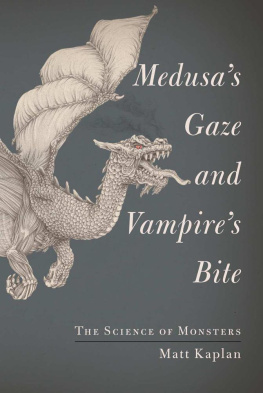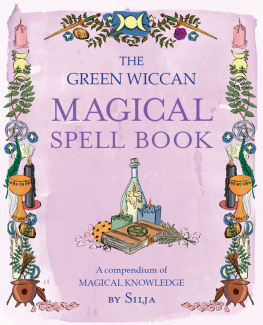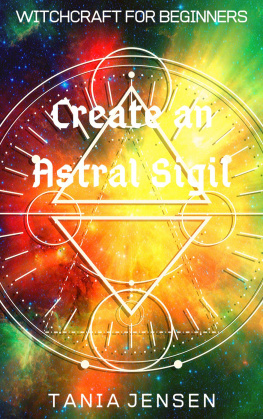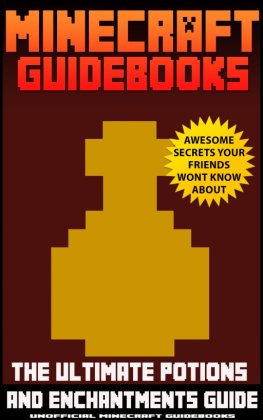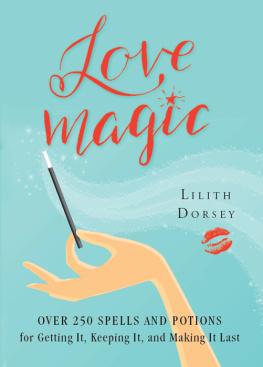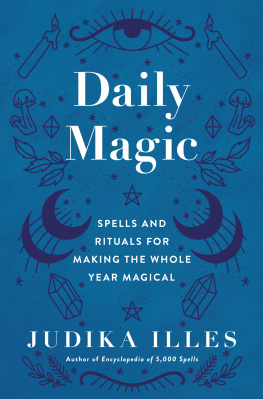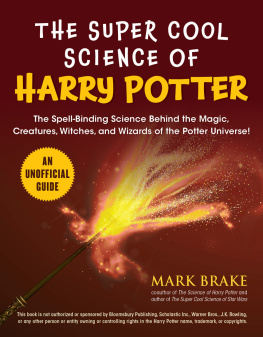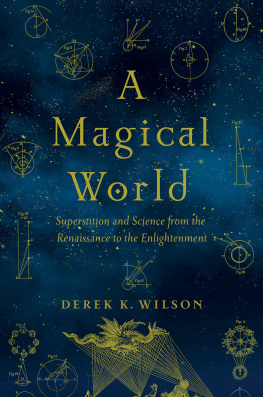Praise for Science of the Magical
Kaplan takes us on a journey spiced with the wonders of myth, history, and art, leavened with impeccable research, endlessly fascinating. And the result is both a compelling read and a deeply thoughtful exploration of the world around us and the ways we seek to understand it.
Deborah Blum, author of The Poisoners Handbook
Erudite, witty, and highly original... Kaplan will not only enlighten and charm you but also change the way you think about what is science and what is magic.
Daniel Lieberman, professor of human evolutionary biology, Harvard University, and author of The Story of the Human Body
Nimbly explores topics as diverse as berserkers, hepatomancy, Methuselah mice, stage magic, superheroes, and sunstones, taking the reader on wide-ranging journeys from Iceland, Turkey, and Yellowstone National Park to backstage in Las Vegas in his search for the science behind magic and myths.
Stephen A. Mitchell, professor of Scandinavian and folklore, Harvard University, and author of Witchcraft and Magic in the Nordic Middle Ages
A wonderful exploration of the possible. Kaplan takes us on a journey into the myths and magic of days long gone and then looks to make scientific sense of these ancient ideas and practices.
Jeffrey Shaman, associate professor of environmental health sciences, Columbia University
A relevant, fascinating exploration of just how weird the world can be. I tell people about things I read in it at least once a week. In a world of bad news, its refreshing to pick up a book that is filled with wonder, mystery, and joy, especially when all of that comes steeped in scientific evidence.
Maggie Koerth-Baker, journalist and author of Before the Lights Go Out: Conquering the Energy Crisis Before It Conquers Us
This book reminded me of all the fascination and excitement I felt about the universe and how important it was for me to study life and our place in the world. In short, it made me remember why I became a scientist.
Elizabeth Repasky, professor of oncology, Roswell Park Cancer Institute, New York
What do The Princess Bride , The Odyssey , Super Mario Brothers, and the book of Exodus have in common? Answer: Matt Kaplans ingenious curiosity.
Daniel T. Blumstein, professor and chair, department of ecology & evolutionary biology, UCLA
A fascinating read that will force you to reevaluate your thinking on myths and magic.
Bruce Rideout, director, Wildlife Disease Laboratories, San Diego Zoo Institute for Conservation Research
A must-read for anyone who has wondered why things are or have been so.
Barbara L. Fredrickson, author of Positivity and Love 2.0
What I have always loved about magic is that brief moment when the impossible seems possible. In this book, those impossibilities are made to seem ever so slightly doable through Matts impeccable research and endless curiosity. Its a bit of magic itself.
Jason Alexander, actor ( Seinfeld ) and 2006 Parlour Magician of the Year, Academy of Magical Arts
This book captivates the imagination... A very entertaining and enlightening read.
Randall Hill, executive director, Institute for Creative Technologies, USC
An insightful and fun tour de force on how magical thinking can arise in even the deepest thinkers. There are dozens of books on how people think irrationally, but no other book explains why we think irrationally as clearly or with as much sensitivity and humanity.
Stephen L. Macknik and Susana Martinez-Conde, authors of Sleights of Mind: What the Neuroscience of Magic Reveals About Our Everyday Deceptions
A smart, funny trip through the ancient stories of magic that still have the power to enchant us today... A remarkably wide-ranging tour of modern science. The effect is, dare I say it, magical.
Carl Zimmer, author of A Planet of Viruses
A compelling read for anyone interested in science, but more importantly, for anyone who has ever wondered about the wizardry and magic of life.
Jay Olshansky, professor of epidemiology, University of Illinois at Chicago
Thank you for downloading this Scribner eBook.
Join our mailing list and get updates on new releases, deals, bonus content and other great books from Scribner and Simon & Schuster.
C LICK H ERE T O S IGN U P
or visit us online to sign up at
eBookNews.SimonandSchuster.com
CONTENTS
In loving memory of Patricia Morse for helping me to reach The Hobbit when I was too small to reach it by myself.
INTRODUCTION
And some things that should not have been forgotten, were lost. History became legend and legend became myth.
GALADRIEL, THE FELLOWSHIP OF THE RING
T he Egyptian war chariots were fast approaching. With no weapons, few rations, and the scorching desert sun beating down upon them, the situation was looking dire for the fleeing Hebrews. Then things went from bad to worse as they found themselves at the edge of the Red Sea. Capture seemed inevitable. The chariots drew closer; all seemed lost; then it happened. Moses lifted up his staff and called upon God to aid the people in their time of needand help them God did. The waters parted, the Hebrews ran to safety, and the Egyptians were drowned by the crashing waves as they tried to follow.
Told over and over through the generations and depicted in countless works of art, the parting of the Red Sea in Exodus is one of the most gripping supernatural moments in Western mythology. It is also an event that, like the ten plagues, archaeologists, historians, and Bible scholars have relentlessly dissected as they have sought to determine if fragments of fact are nestled among the fiction. Might such a story contain descriptions of natural events like earthquakes, floods, or storms that our ancestors witnessed but could not understand? Yes, but we need not only look to our most ancient myths to find bits of recorded history.
Several years after accidentally being exposed to a high dose of radiation while working at a nuclear power plant, engineer Norton McCoy fathers a son named Hank. As the boy grows, he develops inhumanly long limbs, incredible strength, and apelike hands and feet. Due to his unusual body, he comes to excel at numerous sports at school but quickly meets with discrimination from other students on account of his being different. Hank soon discovers that he carries mutant DNA on account of his fathers radiation exposure, and while he is not alone, he is a minority in a world filled with people who both hate and fear him. He soon changes his name to a more appropriate alias, Beast, and ultimately joins the X-Men to fight for mutant rights.
There is little doubt about what realities the X-Men comics were recording when they were first written in 1963. The Civil Rights Act was only months away from being signed into law by President Lyndon Johnson. The issue of discrimination was on everyones mind, and the persecution of mutants as a metaphor for this issue was ideal. Yet not just racial tensions were captured by this modern mythology. Science was recorded too.
Mutants were initially called the children of the atom for a good reason. The Cuban Missile Crisis, which is depicted in the movie X-Men: First Class , took place just a year before the comics were written. Anxiety about the effects of radiation on human biology was at an all-time high and was preserved in the X-Men comic series. The Hulk is much the same, appearing in 1962 and described as the result of gamma radiation dramatically altering Bruce Banners body. Spider-Man, also created in 1962, similarly gains his powers after being bitten by an irradiated spider.


